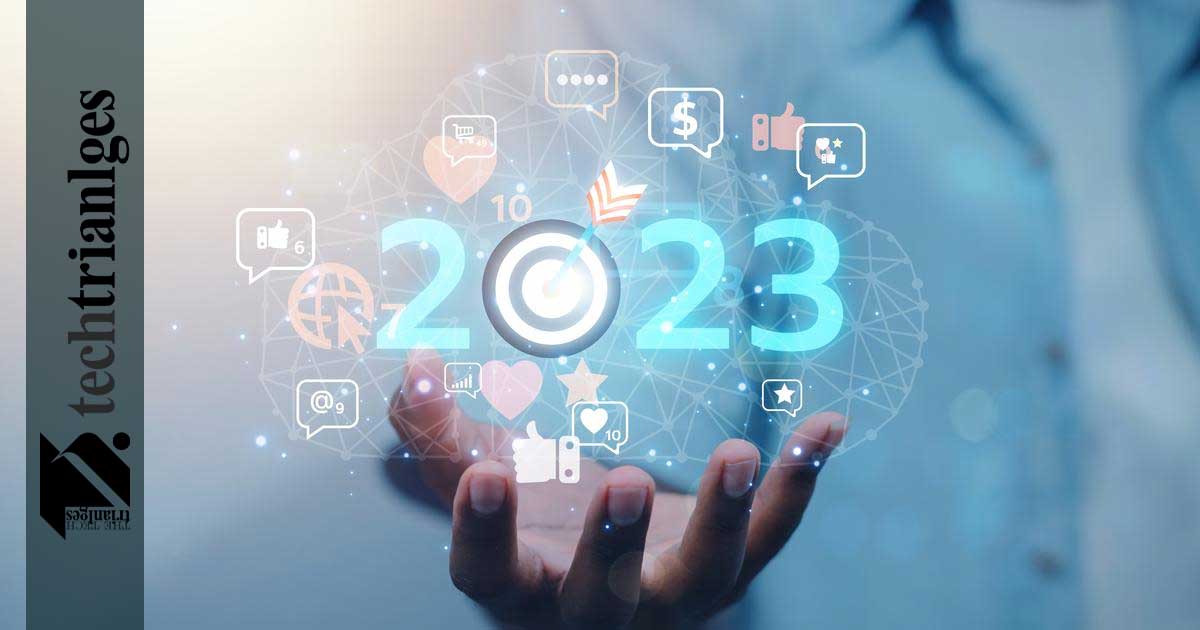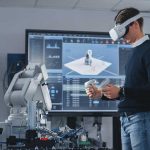Technology continually evolves to change the way society behaves. Year after year, new disruptions appear within the ICT world that are aimed at transforming our environment as we conceive it right now. These trends point to the following technologies.
Metaverse
The virtual experiences that we can enjoy today are the germ of the future metaverse, and already allow us to appreciate the potential that it has, especially the one that it will have in the future as a marketing and communication tool.
The size of the metaverse market will be valued at over $80 billion by the end of this year and is expected to grow at a compound annual growth rate of 33.6%.
A metaverse is a virtual world where users share experiences and interact in real-time within simulated scenarios. It’s still largely conceptual, but it could transform the way people work, shop, communicate, and consume content. However, we will have to wait for its consolidation since it is in its early stages of development.
Virtual and Augmented Reality
Augmented reality (AR) and virtual reality (VR) are two sides of the metaverse. Augmented reality could increase advertising space in the real world with special new glasses. Virtual reality itself would create a whole new digital area for advertising. The technology still has to catch up until it can be considered one of the rapidly emerging technologies.
Augmented reality and virtual reality are finding rapid adoption and AR/VR will be a key part of how people access the metaverse. A few innovative use cases have entered early consumer adoption, such as gaming, fitness, and social media, as hardware devices have become more affordable. Meanwhile, the use of AR/VR in business continues to expand in terms of maintenance, design, and training. These immersive technologies are also being used to make a positive social impact in healthcare, education, and the arts.
However, as with all innovative technologies, AR/VR has great benefits and risks (security risks, data protection risks, virtual bullying, etc.).
Edge Computing
Edge computing is another of the technological trends that are already taking center stage in 2023. Its advantages are that it brings computing processes and data storage technology closer to organizations, and it reduces response times and the amount of bandwidth used.
In addition, edge computing pushes cybersecurity to a new level by reducing issues with privacy regulations, local compliance, and data sovereignty. Computing speed will also increase dramatically with edge computing as it reduces latency. Data analysis is limited to the edge, so processing speeds can be greatly accelerated, while the cost of maintaining data is reduced, categorizing it according to a management point of view. Data can be kept in locations at the edge, thus reducing the investment required in bandwidth.
Blockchain
Blockchain has been a cybersecurity reference for many years now. And it is that although we only think of blockchain technology in terms of cryptocurrencies such as Ethereum and Bitcoin, it is evident that it offers many types of security that are beneficial in other areas.
The vital thing is that it is data that can only be added and cannot be removed or changed, due to this, it makes it extremely secure. Additionally, blockchain software is consensus-based, so no one person or organization controls this data. Blockchain means that there is no external gatekeeper controlling the transactions or the entire software.
Blockchain is one of the technological trends that is constantly expanding towards digital use cases.
Generative AI
Artificial intelligence is booming in every industry sector, from software development to supply chain management to the metaverse. Various studies show that companies are already considering adopting at least one type of AI technology. This means that AI technology is already in use by many companies and will likely play an even bigger role in the future. But where might the AI journey take businesses in the future?
There is talk of AI as a service, where companies can outsource services in the field of AI to third parties. And certainly, generative AI, which uses AI and machine learning to create new digital content with little human intervention. Gartner predicts that by 2025, generative AI will account for approximately 10% of all data generated and 30% of all marketing messages from major brands.
AI trends may also depend on whether new laws will address copyright and ethical issues associated with such use of AI in the coming years.
Machine Learning
A major contributor to the development of machine learning technology is the advancement of chip design and data access. Computing power has grown enormously. Data has become the new currency of business and trends say that the future of many industries is connected to data and access to data.
Cloud Computing
It has been in recent years companies have begun to massively adopt workplace solutions in the cloud that allow their employees to continue working with their corporate systems and applications without having to be physically in the offices. First, it started with the infrastructure, then the collaborative user work environment until it reached the world of software development, which is also moving to the cloud.
Cloud development refers to the creation and deployment of applications and software using cloud-native components and services. According to the latest report from Canalys, in the first quarter of 2023, global spending on cloud infrastructure services rose an impressive 19% year-on-year, reaching a value of $66.4 billion.
In general, the trend is moving towards multi-cloud environments. In other words, companies trust several cloud service providers so that they can balance the loads between them and choose the best combination for each service or application, while avoiding vendor locking that allows them to have options to renegotiate conditions with their providers.
Cloud computing trends will only grow in the coming years as more organizations, large and small, put their data in the cloud and stop relying on on-premises servers. We can expect a huge transition to cloud computing in the next five years in many organizations, businesses, and industries.
There will also be further advances in alternatives to cloud computing, including edge computing and fog computing. Fog computing overcomes the challenges of cloud computing technology that cannot process massive amounts of data in a short time.
5G Internet Connection
5G is the next-generation standard in mobile communications that offers faster speeds and reduced latency. 5G networks have been in development for many years, but it is only now that networks are starting to connect at a faster pace, and 5G offers much faster speeds on mobile devices with more reliable Internet connections. Along with this, 5G smart networks are presented as an alternative to expand the Internet of Things.
As a result, with much more wireless bandwidth available more IoT devices can connect. There will also be more possibilities in the future for autonomous vehicles and even smart cities. All of these trends will be made possible by much faster wireless data transfers coming with 5G networks.
Quantum Computing
The idea of quantum computing arose in 181 when Paul Benioff presented his theory to take advantage of quantum laws in the computing environment. In this line it is understood that quantum computing was born because the simplest systems could not be modeled, not even with quantum mechanics, more computing power was needed compared to what any equipment of the moment could provide.
Quantum computing addresses the superposition of matter and quantum entanglement, thus taking a step forward from traditional computing to store more information and work with more efficient algorithms. The important thing in this case is that it allows a greater number of operations to be carried out simultaneously.
In these years, efficient quantum algorithms have been developed for difficult classical tasks: simulating physical systems in chemistry, physics, and materials science, searching a messy database, solving systems of linear equations, and machine learning.
The quantum computer increases processing power by applying the laws of quantum mechanics, for which I can work with the quantum bit or qubit, which can be in superimposed states.
The advantages it offers are greater computing power, memory capacity, and lower energy consumption.
The qubit is the basic unit of information in quantum computing, something similar to what the binary bit represents in traditional computing. The qubit represents the bit according to quantum mechanics, and this includes the principle of superposition, which means that a quantum system can have two or more states at the same time.








